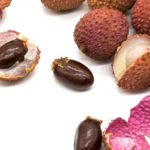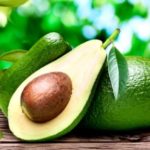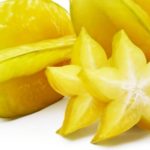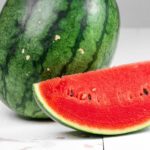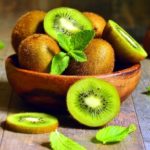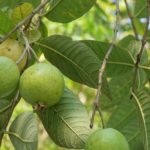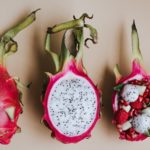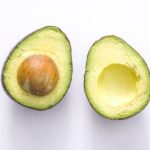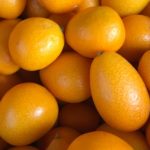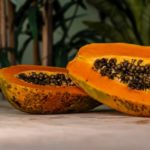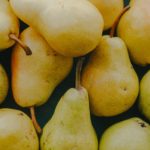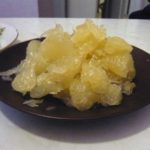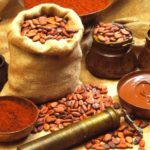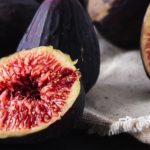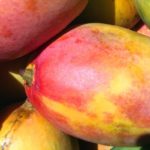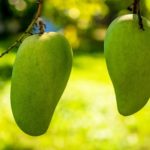Lychee fruit
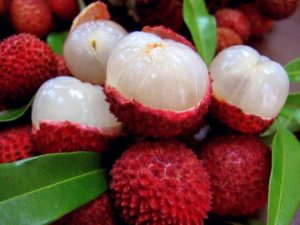 Lychee is one of the symbols of the great people of China, where it has been cultivated for over a thousand years. Its red, pink or green rind hides the shiny sweet flesh with a slight bitterness. The fruits of an evergreen lychee tree, oval-shaped, hang in bunches and contain one brown stone. Lychee fruits contain a lot of carbohydrates in the form of sugars, but little protein and fat, which makes them attractive in the dietary plan.
Lychee is one of the symbols of the great people of China, where it has been cultivated for over a thousand years. Its red, pink or green rind hides the shiny sweet flesh with a slight bitterness. The fruits of an evergreen lychee tree, oval-shaped, hang in bunches and contain one brown stone. Lychee fruits contain a lot of carbohydrates in the form of sugars, but little protein and fat, which makes them attractive in the dietary plan.
For some time on the shelves of our supermarkets beginning to appear more and more exotic fruits. No one can be surprised by pineapple, kiwi, banana, fig or coconut. All this is more than once felt and tried. But some fruits from equatorial countries still cause some concerns among Russians. Having seen something extraordinary red or yellow in the basket on the market, many people look away and do not ask what would seem to be incompetent.
But those who are still few who have visited the Bahamas, the Maldives in Honduras, etc. sometimes with the appearance of connoisseurs they take these round and oblong and flat fruits, and when they come home they try using the Internet to find out what it is and what they eat it with.
To some extent they are right, it is often useless to ask our sellers, because you can hear absolutely nothing of what this fruit actually represents. Here, for example – lychee fruit. And why not hear about these reddish fruits in the pimples, their ears wither. And in fact, litchi is a very tasty and healthy fruit. Let’s try to tell everything that we could learn about this fruit.
Where and how to grow?
Sometimes litchi is called Chinese plum and not without reason. It really is something like a plum and, moreover, it is in the south of China that this plant is quite widespread and from there it began its journey to other countries. Now they are found in various countries in Asia, in America and Africa. This is an evergreen rather high plant, usually about 10 meters high, but it can be higher. It grows on well-hydrated, fertile soils. It grows rather slowly, begins to bear fruit only in the 8-9 year. Abundantly fruits only in dry subtropics. Humid tropical climate tolerates this fruit, but does not give fruit, and it is not possible to grow a full-fledged fruit-bearing plant at home.
The leaves are oblong, dark green and shiny. It blooms yellowish, with stamens protruding in all directions, whitish flowers, exuding a strong aroma. Flowers are collected in large inflorescences similar to umbrellas, sometimes up to half a meter in length.
The fruits ripen in June. Despite the fact that the inflorescences are quite large, the fruit is 4-5 times smaller, because most of the flowers crumble. Still, the tree as a whole gives a fairly large crop. When assembling, they tear off entire stems and store them on branches, because separately torn off fruits deteriorate quickly.
The fruits themselves are relatively small in size – on average in diameter where it is three – four centimeters. The shape can be both oval and ovoid, depending on the variety. This fruit weighs about twenty grams. Outside, they have a rather dense red peel in small pimples. The flesh is white or cream colored like jelly. Inside a large brown core. The taste of ripe fruit is sweet and sour, quite pleasant with a bright aroma. Probably because the core is clearly highlighted in the section, the Chinese often call this fruit “the dragon’s eye”.
Benefit and harm
By its composition, litchi fruits contain a large number of trace elements: iron, phosphorus, copper, zinc, potassium, calcium, magnesium, sodium, iodine, manganese and fluorine. The sugar content is within 6-14%, depending on the place of growth. Fat, protein, carbohydrate and dietary fiber are also present in small quantities. They contain enough vitamins of group B, as well as vitamins C, E, H and K. The nutritional value of the product is not more than 75 kcal per 100 grams. Low calorie, not quite understandable way, combined with high saturability. They can be eaten practically in unlimited quantities, while well satisfying hunger, but not at the same time receiving a large number of calories. This property is indispensable for people inclined to corpulence.
Given the high content of vitamin C and trace elements of potassium, lychee is acceptable in the diet of people suffering from diseases of the cardiovascular system. In China, it has been practiced in folk medicine for a long time in the treatment and prevention of atherosclerosis. It effectively contributes to lowering cholesterol. It is a good tonic for the whole body. Probably not in vain, the people of India, Nepal, Pakistan consider lychee to be the fruit of love. For this purpose, use the broth made from the peel of the fruit. This decoction is also effective for removing excess fluid from the body, it has a positive effect on the function of the kidneys.
This exotic fruit has a lot of useful properties. It perfectly quenches thirst, especially in heat. Regulates the work of the stomach and intestines, helping to get rid of constipation. Well can help people who want to lose weight. It is useful to eat litchi for people with anemia, diabetes, gastritis, peptic ulcer, liver disease and pancreas. In Tibetan medicine, litchi, consisting of lemongrass, is practiced in the treatment of oncology. It also effectively helps to reduce blood sugar in diabetes. 10 fruits per day is enough to normalize the level of sugar. In pharmacies appeared drug “oligonol” derived from the fruit. It is an antioxidant, it is recommended for a number of diseases. In addition, it is used to reduce weight and slow down aging.
Many Asian countries, given the growing interest of lychee fruits in Europe, began to grow whole plantations of these trees. The harvest taken with branches can be stored for a long time, which allows it to be transported without problems. Useful properties long enough remain in a dried and frozen look. Frozen fruits can be stored for more than a month, while they do not lose their taste and healing properties. Nevertheless, with the purchase you need to carefully inspect the appearance and condition of the fruit. Do not buy if their skin has darkened. Buy only those that have no external defects and they have a red saturated color.
Hardly ever. They can only be harmful if you are hypersensitive. However, you must know that eating too much should not be consumed. Adults need 200-250 grams per day. For children, this rate is better to reduce to 100 grams. Otherwise, for some, allergic reactions are possible in the form of acne on the skin or on the oral mucosa.
Usually they are used fresh: wash, carefully peel, remove the core, the flesh is ready for use. It is also very good to add pulp to sauces and desserts. And if you add it to a dry wine or champagne, you get an amazing taste of the drink. The Chinese make wine from some litchi fruits, a specific taste. Perfect for serving fish and meat dishes instead of olives. It goes well with roast of game, lamb, pork. Very good in salads.
